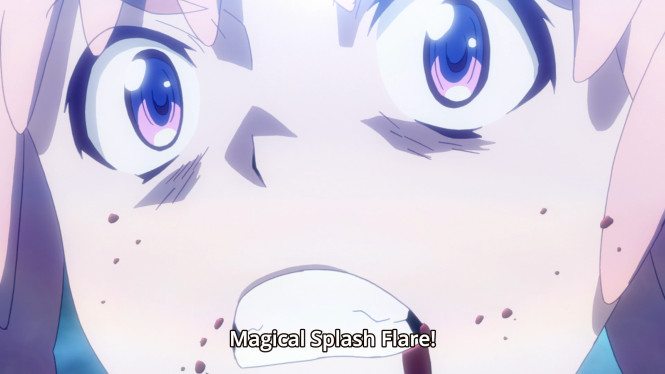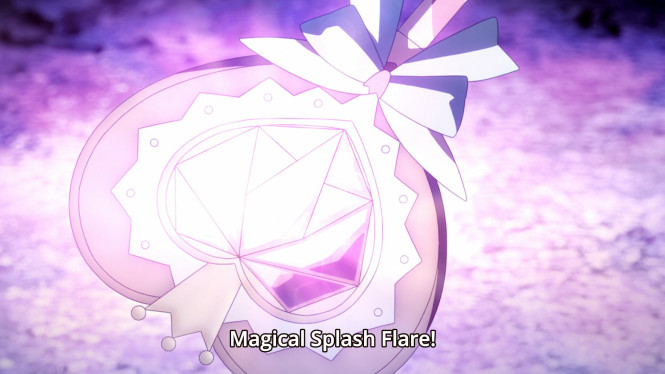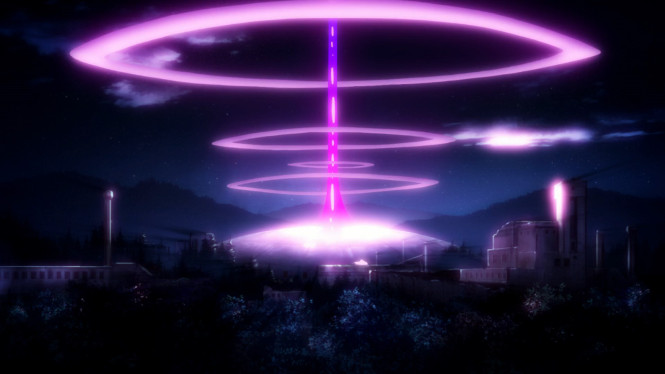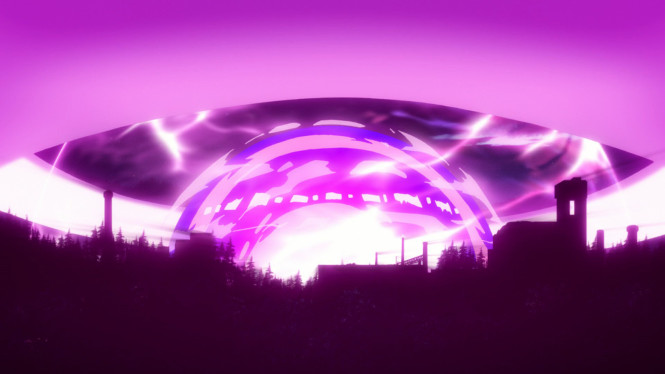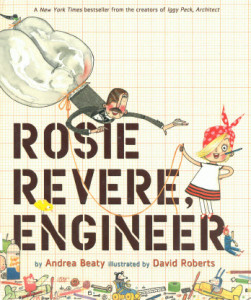A threshold has been crossed in Re:Creators.
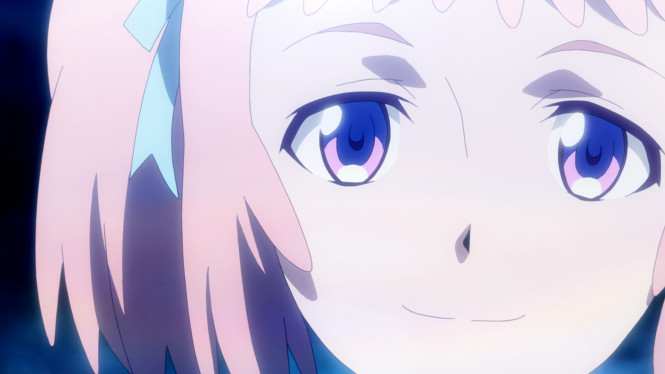
I will admit that I have been treating Re:Creators with kid gloves to this point. Part of that is on me, and part of it is on the show for taking so long to get to this point. Although Re:Creators has been teasing some of the inherently compelling possibilities of its intersecting stories in prior episodes (most relevantly, Mamika’s first fight in the real world in episode 2) and has aimed for some heavier emotional beats with Sota and Meteora, episode 8 is the first time Re:Creators really goes for it in a way that counts. And so, I think that, as well-intentioned as the show has been up to this point, I think I can be forgiven for considering it only as a vehicle for playing its competing narratives (literally) against each other for fun.
What Re:Creators did in episode 8, though—and what it hasn’t done until this point—is go for something that demonstrated it understands not only the full potential of its own premise, but also that it can draw on the wells of inspiration that underline its to-type cast of fictional characters. It has gone to the metatext. If I may crib from ghostlightning’s lexicon, Re:Creators has proved that it is capable of remembering love. In this case, for magical girls.
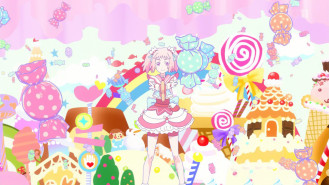
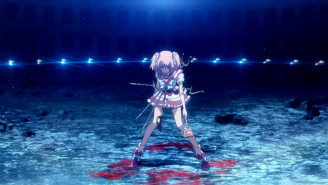
As mentioned early, Mamika has been something of a focal point since early for Re:Creators‘ musings on the relationship between the stories of its characters and the story they have come in to. It’s easy to see why, too, as the simplistic worldview of a character originating from a show made for children (who recognize and love her) is an obvious target for playing against the harsher realities of the “real” world of the Creators. But where her early struggles to acclimate to the differences between the world of her story and the one she now finds herself in no were merely a fun intellectual treat, as the series has worn on those struggles have gained both substance and weight.
The seeds of what has become something significant and impressive are really sown in episode 7, as Mamika, with the aid of Sota’s affirmation and information, makes the choice to change her allegiance. The essence of the question Mamika asks is this: Having been removed from her story and her world, is she still the same character she was? Or, perhaps more poignantly, is remaining that same character—is being a magical girl—even possible?
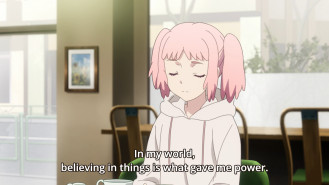
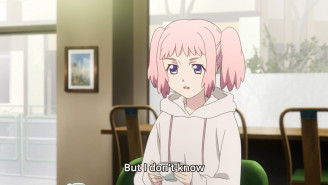
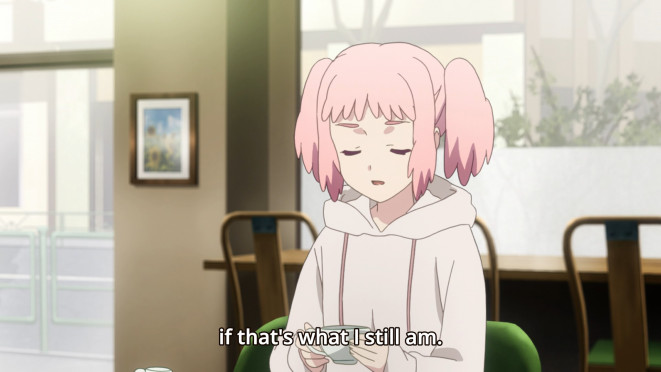
In the abstract, such a question might be just another of Re:Creators‘ intellectual curiosities, a bauble of a question for we watchers to play with as the characters in the show live it out. But Mamika is a magical girl—and because she is, the consequences of considering her identity in this way reflect back on the nature of magical girls as a whole. In questioning her own nature in this new context, Mamika questions the very existence of magical girls. She becomes a reference point for all magical girls, an incarnation of what the ideals they stand for as an archtype; that is, the fact that believing in what’s right can be enough to bring goodness, hope, and salvation to the world.
“I think it’s for kids, but I think it’s a good story.”
—Sota to Mamika, Re:Creators Episode 7
The title of Re:Creators‘ eighth episode is “I CHOSE this way of life.” And so, Mamika chooses. She chooses that she wants to be the magical girl she was written to be. It’s a clever inversion, as the form of the magical genre dictates that magical girls do not choose to become powerful avatars. But Mamika seizes “the magical girl character” of her own volition, and, in making the choice to become a magical girl, actually acts out the part. In other words, in choosing to believe in belief, she behaves precisely how a magical girl would—except this time it is out of her own agency rather than the form of her story.
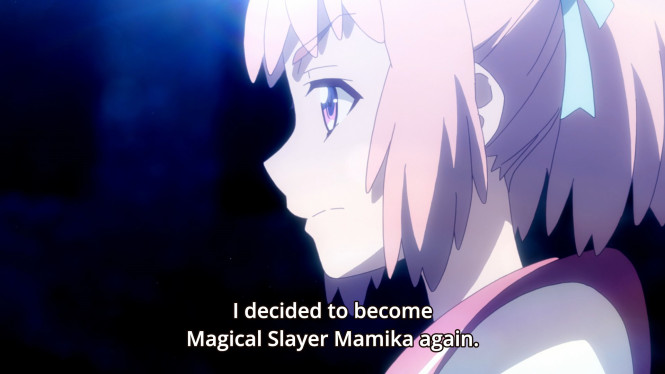
However, it is not just the choice itself that allows Re:Creators to imbue Mamika’s character with such power. The magical girl trope is inherently compelling because the ideals that a mahou shoujo enforces are so lofty and so bright. It is one thing for Mamika to take up the mantle of magical girl within the cradle of a story built to justify her; it is another to do so in a world where there are no such convenient guarantees.
When Altair attacks Mamika, Mamika bleeds—just as she does when Selesia attacks her in episode 2. It is a bleak signal that the story Mamika is in now is not a magical girl story. The ugliness of Altair’s experiences rebuff Mamika’s declaration that she will accept Altair’s sadness in this world just as she used to in her old one. But unlike before, when the sights of the consequences of her actions paralyzed her, this time Mamika is prepared to accept those consequences—even if it means being impaled by Altair’s swords.
What is the nature of a magical girl? To be true to her ideals. By giving Mamika the chance to choose her ideals in a world where they may no longer hold true, where the result of holding to those ideals may very well be death—in the most adverse of situations—Re:Creators acknowledges the truest essence of the Magical Girl. It counts her worthy to be “real.” And in so doing, Re:Creators becomes something more than a play at genre blending. It becomes an act of remembering love.
“Magical Splash Flare!”
